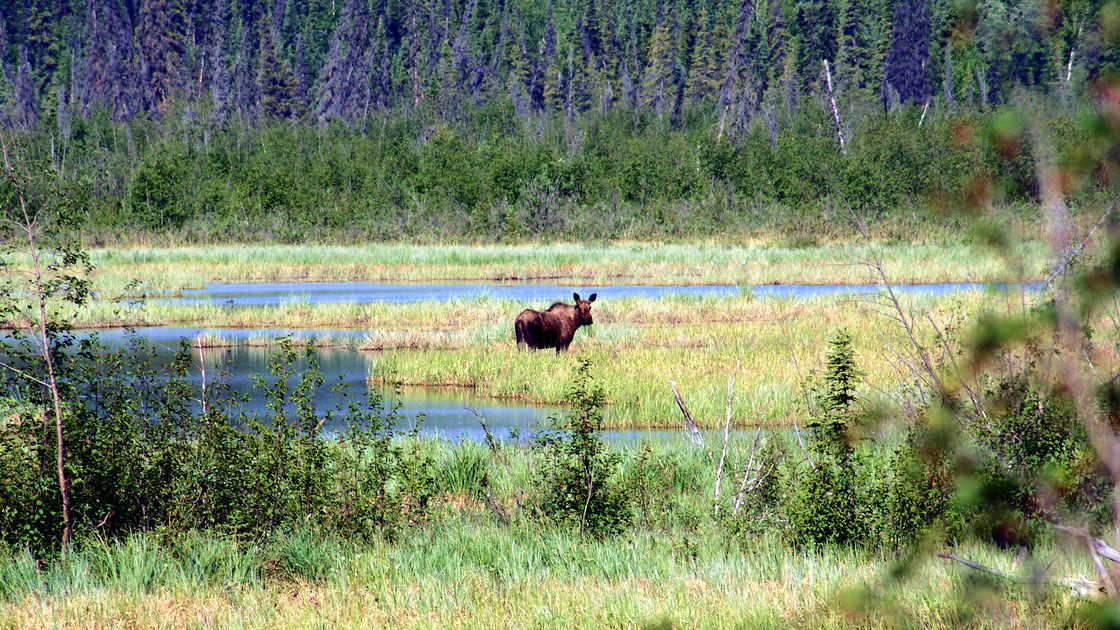Subsistence, A Way of Life: How Climate change is Affecting Alaskan Traditions

As Keemuel Kenrud explains below, the moose is very important to Alaskans. Photo: JLS Photography Alaska
The edges of our country are eroding, raising difficult questions about adaptation, relocation, and what it means to be an American experiencing climate change today. To connect the shared experiences of Americans facing these dramatic transformations, the National Trust for Historic Preservation has partnered with our Managing Director Victoria Herrmann as she travels around the U.S. and its territories interviewing communities directly affected by shoreline erosion and climate change.
Subsistence is a traditional way of living off the land that has sustained Alaskans for thousands of years. But for many Alaska Natives, subsistence is more than just food—it is a worldview and a way of life that includes history, culture, traditional values, and customs.
Nineteen year old Keemuel Kenrud was raised in a subsistence lifestyle in Togiak, Alaska, a village on Bristol Bay in the Southwest part of the state.
He works for the US Fish & Wildlife Service’s Togiak National Wildlife Refuge and he is also one of the Arctic Youth Ambassadors, a select group of young people from across Alaska working to share their stories of life in the Arctic with the rest of the state, country and world.
He first started hunting with his grandfather as a young boy, and he’s become very familiar with the sounds of wildlife, like geese flying overhead.
He remembers getting his first moose when he was 12 years old. Here hunting is never described by the word “to kill” but rather “to take” or “to get” a moose. An animal “gives” itself, and the hunter receives it, on behalf of the community.
Afterwards, Keemuel’s grandfather took him aside and explained the significance of this moment. “This moose is very special,” he told Keemuel. “It’s not just some animal that you hunt for sport, this moose will feed everyone. Not only their physical bodies but their mental being, their emotional selves.”
Keemuel remembers this moment well, the sound the moose made and the pride and significance of taking it for himself and his village. It was the first time he truly understood the deeper meaning of what it was to subsist in rural Alaska. Without subsistence, he says, “I don’t know how I would ever live on this planet.”
Marjorie Tahbone, a 26-year-old Inupiaq woman from Nome, remembers the first time she butchered a bearded seal—Oogruk—when she was just sixteen years old.
“I had been preparing for that moment for years,” she said, learning from her mother how to do things like separate the blubber from the skin to create seal oil, an Alaska Native delicacy.
“You’re doing something that you knew your ancestors did decades and decades and decades before. There’s something about that feeling that makes me feel whole,” she said. After she butchered her first seal, she finally felt like a woman. It was a right of passage.
Austin Amahsook, Inupiaq Eskimo, was also born and raised in Nome.
He studied Rural Development at the University of Alaska Fairbanks and works as the Marine Advocate for Kawerak, the Native corporation that includes villages of the Bering Straits Region of Alaska.
Kawerak’s stated goal is to “assist Alaska Native people and their governing bodies to take control of their future.” Ahmasuk manages the Kawerek Marine Program, where he advocates for subsistence activities in the face of melting sea ice that’s leading to increased shipping in the Bering and Chukchi Sea.
His advocacy is personally rooted. He remembers the lessons his grandfather would teach him while they were walrus hunting together.
Vince Pikongonna, 68, grew up hunting walrus on King Island.
Lying 40 miles off the coast of Northwest Alaska in the Bering Sea, the island is about 1 mile wide. Vince is Inupiat, and was raised hunting walrus. He says “hunting in our culture is a very serious matter.” He has noticed changes in his lifetime. Fifty years ago hunting began in June, now it begins two months earlier. Warming temperatures cause the ice to leave the shore sooner and the marine mammals come earlier.
“It’s almost like putting us on another planet,” he says. “What do we do now?”
The commentary was originally published on October 6, 2016. It was created by the project Frontier of Change, a production of KNBA and Finding America, a national initiative produced by AIR, the Association of Independents in Radio, Incorporated, and with financial support from the Corporation for Public Broadcasting, the Wyncote Foundation, the John D. and Catherine T. MacArthur Foundation, and the National Endowment for the Arts.